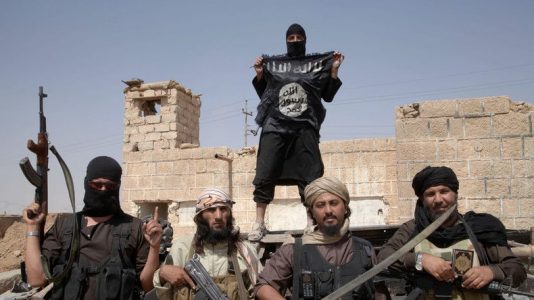
The Islamic State is reconstituting in Iraq and Syria
It has been than a year since US President Donald J. Trump took to Twitter to declare victory over the Islamic State, but new reports indicate that the more than 18,000 ISIS fighters are still in the field and are beginning to establish new bases of operation to carry out guerrilla attacks across Iraq and Syria.
ISIS fighters who escaped capture or death have, according to both the New York Times and AI-Monitor, reconstituted and are now capable of carrying out assassinations, ambushes, kidnappings, and sniper attacks. They are thought to have a war chest of $400 million, controlling a string of businesses ranging from fish farming to cannabis plantations.
In August, a high-profile attack occurred in August in northern Iraq when armed men claiming to be ISIS militants publicly beheaded a policeman in a rural village south of the city of Samarra, a “Sunni Triangle” city in Salahuddin Province located north of Baghdad.
A report by the US inspector general concluded that the withdrawal of 1,000 American troops and, in the face of heavy criticism from Turkey, the White House’s decision to drastically reduce its support for the Kurds has created a number of complications.
The Kurdish YPG – the US’ main ally in the four-year fight against ISIS, but a group that the Turks consider to be a terror organisation – currently holds over 10,000 ISIS fighters as prisoners, including 2,000 foreigners, at the Al-Hol camp in northern Syria.
A recent UN report worries that Al-Hol could become a breeding ground for an ISIS, particularly if the YPG are unable to continue holding the prisoners due to a lack of resources and support from the US and Europe.
Washington is currently hampered in its ability to halt ISIS attacks as it continues to draw-down the American presence in both Iraq and Syria, leaving the Kurds, the minority Yazidi community, and the Free Syrian Rebels exposed to ISIS attacks.
Having recognised this, American aerial bombardment operations in Syria against militant positions sharply increased in June and July, despite Trump’s decision to leave few US military advisors on the ground.
With 5,200 troops in Iraq and just under 1,000 in Syria, the American military is faced with an enduring insurgency of a force that remains well equipped and adequately funded, according to US officials.
ISIS appears to have changed tactics from its previous incarnation when it often fought coalition and Kurdish forces in conventional, pitched battles. The group now resorts to traditional guerilla or insurgency modes of operation where they disappear into the local population after every attack rather than attempting to control territory.
Source: New Europe





